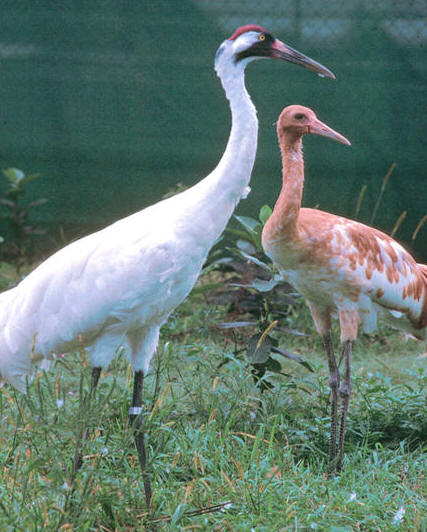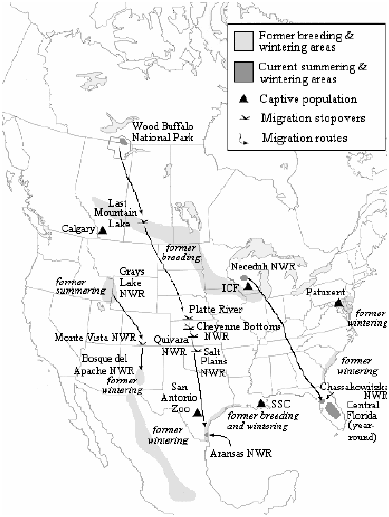Biology / Ecology
The Whooping Crane (Grus americana) is a national endangered bird species found exclusively in North America. It is one of the oldest and rarest birds of the world’s 15 crane species (NPWRC, 2006), and grows to about 1.2 metres in height, making it the tallest bird in North America. Whooping cranes possess several distinctive physical traits, such as white feathers with small red and black patches on their head, a straight pointed bill, a wingspan of nearly two metres with black tips at the end of each wing, and a loud audible whooping call from which it derives its name (Dunlap, 1991). Their chicks possess feathers that are reddish-brown in colour and grow white feathers 120 days after hatching (Figure 1). Whooping cranes live to about 22-24 years in the wild and 30-40 years in captivity (USFWS, 2007).

Whooping cranes are monogamous breeders and mate for life once they reach sexual maturity (Cannon, 1996). Breeding areas for whooping cranes consist of large isolated areas, such as marsh and wet prairie habitats (400–7000 hectares), where they build their nests within bulrushes of shallow swampy areas (USFWS, 2007), and feed on crustaceans, fish, small vertebrates, insects, small mammals, roots, berries, and grain (Cannon, 1996). Prior to colonial times (mid-1800’s), whooping cranes were widely distributed in North America, as they freely utilized the vast amounts of wetlands available, stretching from central Alberta to the Southern end of Lake Michigan during their breeding months (Figure 2).

Currently, however, Wood Buffalo National Park and nearby areas located near the border between Alberta and Northwest Territories are the only places where a natural self-sustaining population of wild whooping cranes nests in North America; this flock migrates nearly 3700 kilometres south where they winter in and around Aransas National Wildlife Refuge in Texas’ coastal plains near Rockport (Figure 3). A second flock, known as the Eastern migratory flock migrates between Wisconsin and Florida, and a third, non-migratory flock nests in Florida.
